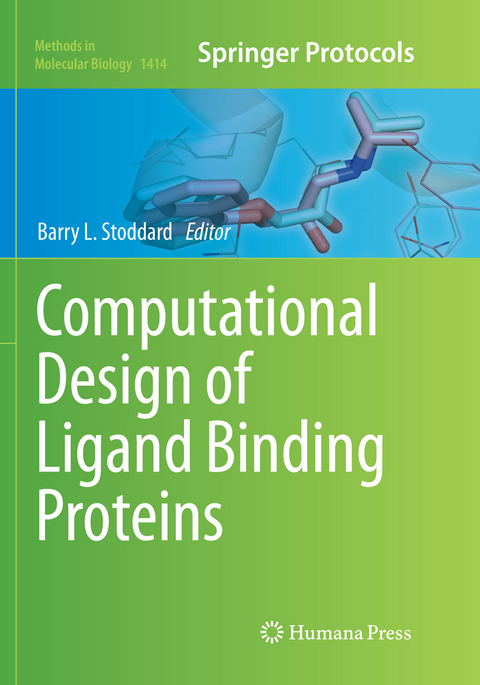
Computational Design of Ligand Binding Proteins
Humana Press Inc. (Verlag)
978-1-4939-8080-2 (ISBN)
This volume provides a
collection of protocols and approaches for the creation of novel ligand binding
proteins, compiled and described by many of today's leaders in the field of
protein engineering. Chapters focus on modeling protein ligand binding
sites, accurate modeling of protein-ligand conformational sampling, scoring of
individual docked solutions, structure-based design program such as ROSETTA,
protein engineering, and additional methodological approaches. Examples of applications
include the design of metal-binding proteins and light-induced ligand binding
proteins, the creation of binding proteins that also display catalytic
activity, and the binding of larger peptide, protein, DNA and RNA
ligands. Written in the highly successful Methods in Molecular
Biology series format, chapters include introductions to their
respective topics, lists of the necessary materials and reagents, step-by-step,
readily reproducible laboratory protocols, and tips ontroubleshooting and avoiding
known pitfalls.
In silico Identification and Characterization of Protein-Ligand Binding
Sites.- Computational Modeling of Small Molecule Ligand Binding Interactions
and Affinities.- Binding Site Prediction of Proteins with Organic Compounds or
Peptides Using GALAXY Web Servers.- Rosetta and the Design of Ligand Binding Sites.-
PocketOptimizer and the Design of Ligand Binding Sites.- Proteus and the Design
of Ligand Binding Sites.- A Structure Based Design Protocol for Optimizing
Combinatorial Protein Libraries.- Combined and Iterative Use of Computational
Design and Directed Evolution for Protein-Ligand Binding Design.- Improving
Binding Affinity and Selectivity of Computationally Designed Ligand Binding
Proteins Using Experiments.- Computational Design of Multinuclear
Metalloproteins Using Unnatural Amino Acids.- De Novo Design of
Metalloproteins and Metalloenzymes in a Three-helix Bundle.- Design of
Light-Controlled Protein Conformations and Functions.- Computational
Introduction of Catalytic Activity into Proteins.- Generating High Accuracy
Peptide Binding Data in High Throughput with Yeast Surface Display and
SORTCERY.- Design of Specific Peptide-Protein Recognition.- Computational Design
of DNA-binding Proteins.- Motif-driven Design of Protein-Protein Interfaces.- Computational
Reprogramming of T Cell Antigen Receptor Binding Properties.- Computational
Modeling of T Cell Receptor Complexes.- Computational Design of Protein
Linkers.- Modeling of Protein-RNA Complex Structures Using Computational
Docking Methods.
| Erscheinungsdatum | 24.06.2018 |
|---|---|
| Reihe/Serie | Methods in Molecular Biology ; 1414 |
| Zusatzinfo | 76 Illustrations, color; 18 Illustrations, black and white; XVI, 375 p. 94 illus., 76 illus. in color. |
| Verlagsort | Totowa, NJ |
| Sprache | englisch |
| Maße | 178 x 254 mm |
| Themenwelt | Naturwissenschaften ► Biologie ► Biochemie |
| Naturwissenschaften ► Biologie ► Mikrobiologie / Immunologie | |
| Schlagworte | individual docked solutions • ligand-binding proteins • light-induced ligand binding proteins • metal-binding proteins • Protein Engineering • Rosetta |
| ISBN-10 | 1-4939-8080-7 / 1493980807 |
| ISBN-13 | 978-1-4939-8080-2 / 9781493980802 |
| Zustand | Neuware |
| Haben Sie eine Frage zum Produkt? |
aus dem Bereich


